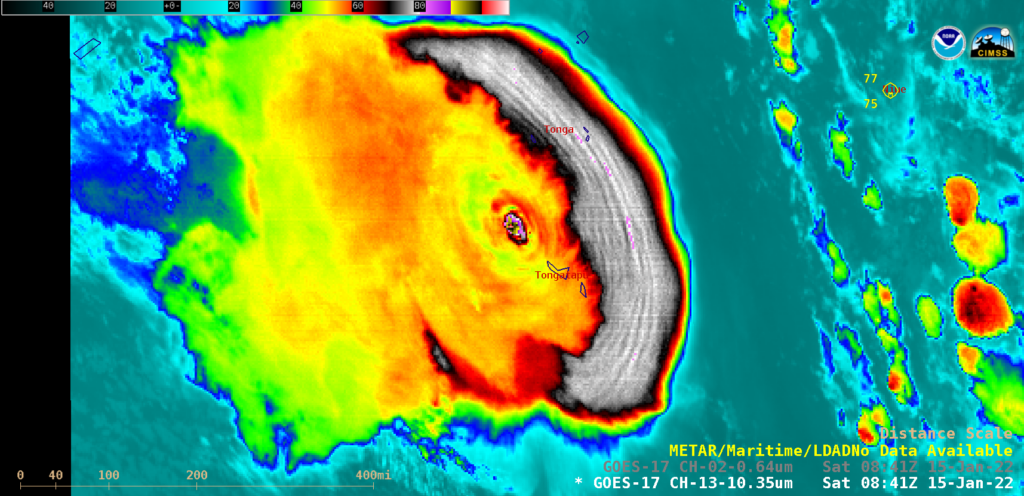Posted an hour ago:
Volcanoes don't necessarily stop after a "Hollywood moment." Still, whatever this was apparently wasn't as intense as yesterday's.
More information from 2017 on the volcano's history. They only really started looking into it in 2017, and this caldera does need watching. I get this general impression, from reading lots of stuff online, that the correct names for various structures might be:
Volcanoes don't necessarily stop after a "Hollywood moment." Still, whatever this was apparently wasn't as intense as yesterday's.
More information from 2017 on the volcano's history. They only really started looking into it in 2017, and this caldera does need watching. I get this general impression, from reading lots of stuff online, that the correct names for various structures might be:
- Hunga: The mostly submarine volcano.
- Hunga Tonga:
The source of yesterday's blast.(Update: It appears to have been the caldera.) - Hunga Tonga-Hunga Ha'apai: The caldera that those two islands rise out of on its north rim; about 6 km wide, floor about 150 m below the waves, and not ancient, in geological terms, though the date of its last eruption is unclear.
Last edited:




